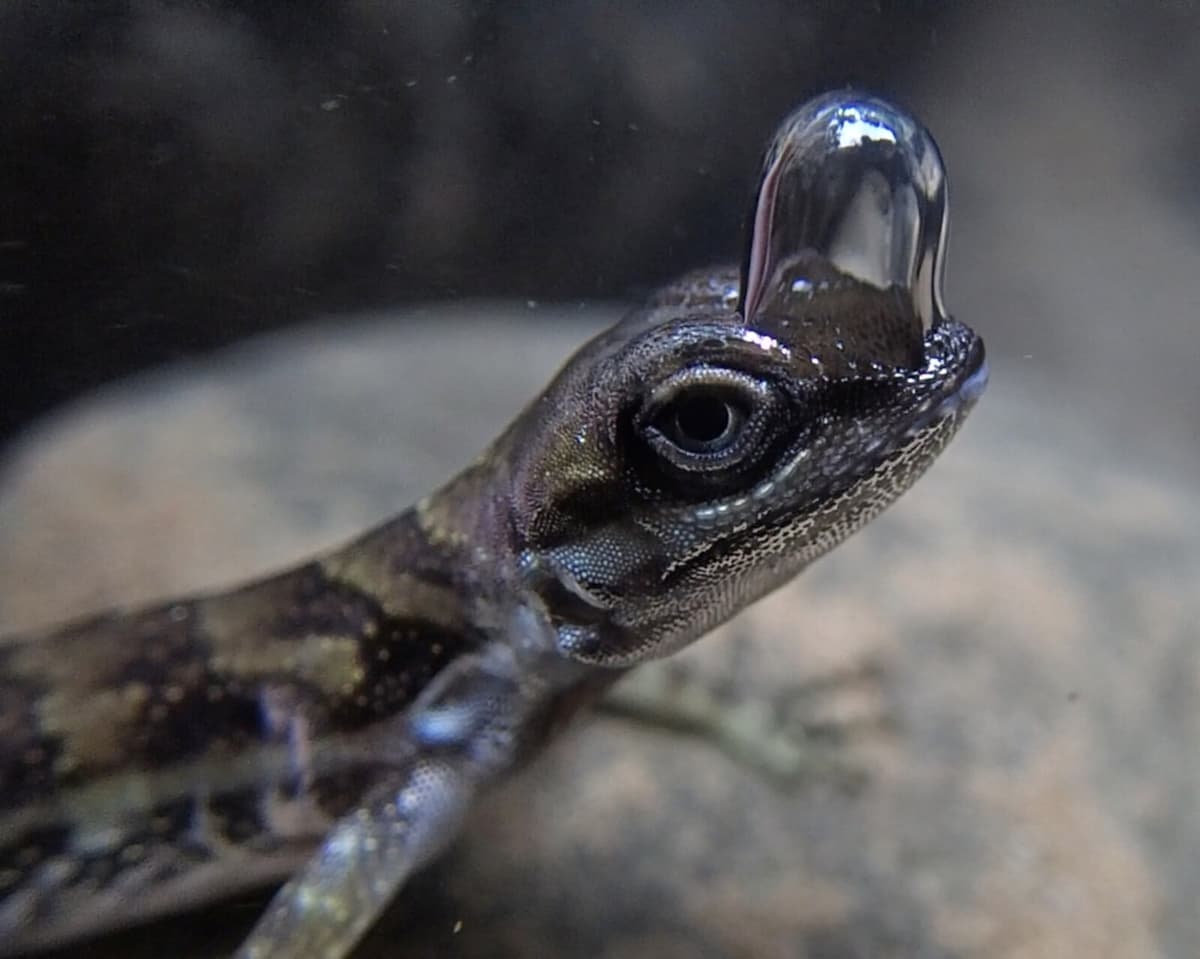The small lizard, Anolis aquaticus, lives among other things in Costa Rica's tropical forests. When it is on land, it is an easy prey for other animals living in the area.
It has been known that the anolis lizard, when threatened, can dive under the water surface and blow up a bubble above its nose, which it breathes through. By hiding under the water surface, the lizard can escape becoming someone's dinner. Up to 20 minutes, it can hold its breath without needing to fetch new air.
"The anolis lizards are like the forest's chicken nuggets. Birds eat them, snakes eat them," says lizard researcher Lindsey Swierk, at Bingham University in the USA, in a comment.
Closer studies
The fact that the lizard can even form an air bubble when it is underwater is due to its skin being able to absorb air. It is what makes it possible for it to blow up its own little air tank well below the surface.
So far, it has not been clear whether the air bubble actually gives the lizard any advantage when it hides underwater. Now, Lindsey Swierk has taken on the diving lizard and studied more closely what actually happens with it.
Bubbles provide extra time
Lindsey Swierk tested by smearing the lizards with a cream that made them unable to blow up their air bubbles. The result, published in the journal Biology Letters, shows that the anolis lizards that could blow up bubbles could stay in the water 32 percent longer than those that were smeared and had a reduced bubble ability.
"It is the first experiment that really shows that the bubbles have significance. Breathing in the bubble makes it possible for the lizards to stay underwater longer," says Lindsey Swierk.





